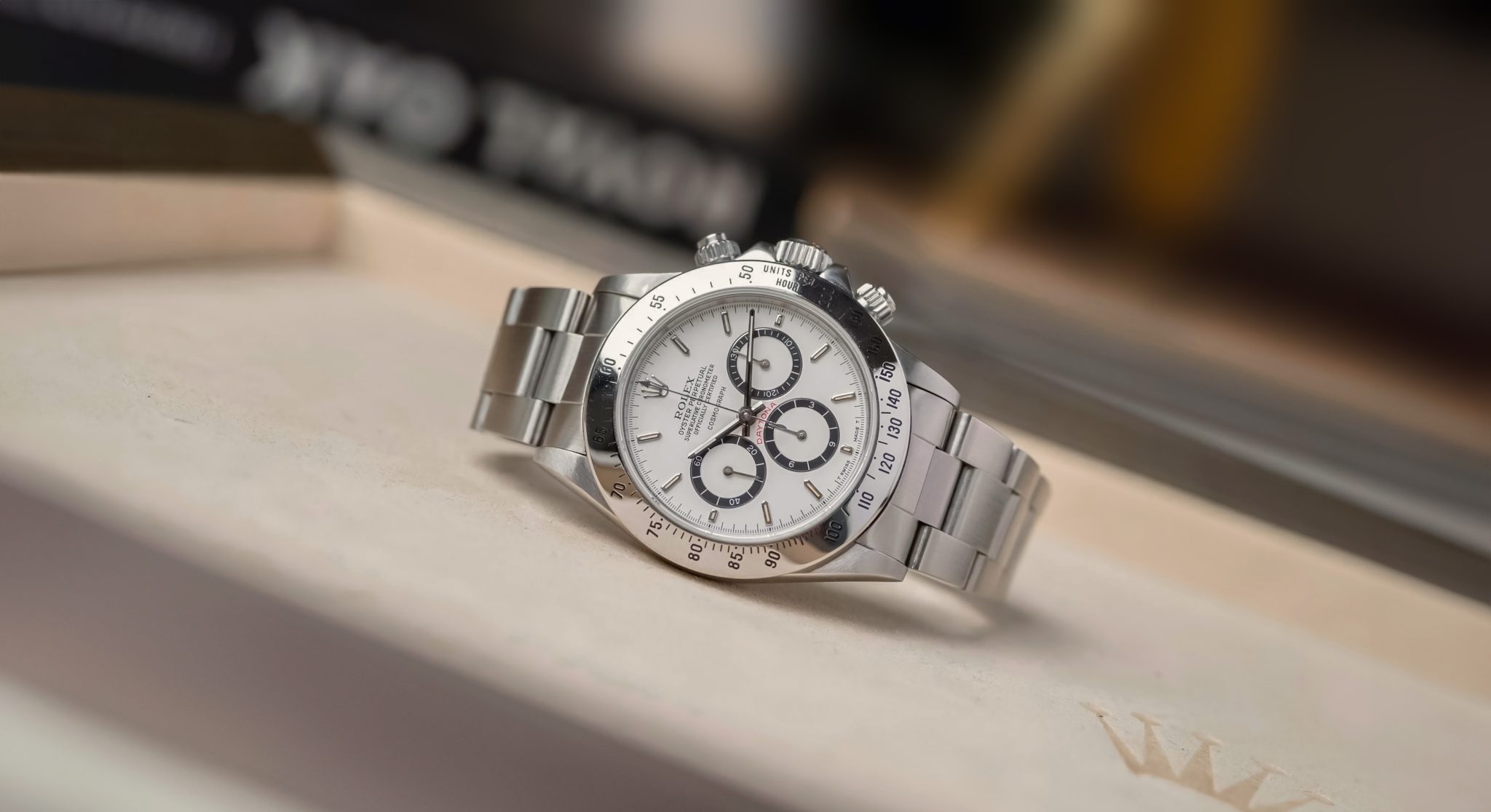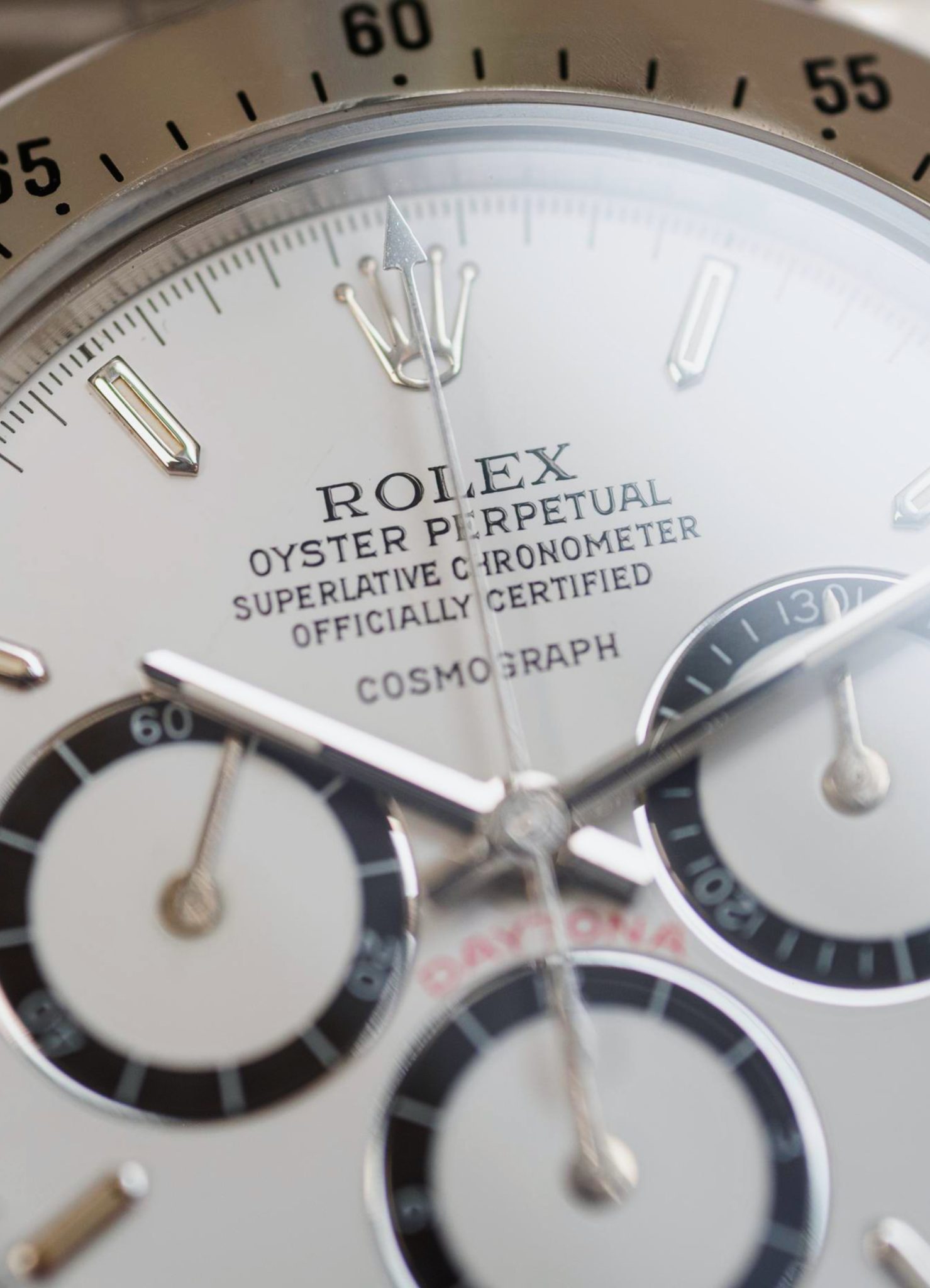
Floating Cosmograph, ‘Porcelain’ Dial 16520 Rolex Daytona
The first of anything in Rolex-land tends to be a bit different, not just because it’s new, but relative to what came after. These small, initial periods of experimentation are where you get meters first Subs, red depth Datejusts, fuchsia GMTs, ‘Blackout’ 14270s, and, indeed, this Floating Cosmograph. This is the very start of the Zenith Daytona. It is difficult to overstate the importance of the 16520. The Daytona had become undesirable and a stagnant seller by the year 1988, a manual wind Oyster case in a world that was self-winding. What the Daytona required was radical rethink, which is precisely what it received. What resulted is one of the most cemented pieces of modern watch design. While any 16520 is an object of beauty, the earliest production dials feature a Cosmograph line of text much lower down than latter iterations and a different dial construction known by collectors as the porcelain dial Daytonas.

The 16520 was Rolex’s first automatic chronograph, fashionably late. These are often referred to as Zenith Daytonas, which is true enough as the movements were purchased directly from Zenith surplus. But that somewhat does a disservice to the over-200 laborious modifications Rolex performed on each calibre before it was deemed worthy of a Rolex signature. The date was eliminated, the beat was dropped from 36000 to 28800 vph, a larger free-sprung balance was fitted, and many individual components received more careful finishing. This is all not even to mention the fact that this basic case design has lasted until today. The 16520 is the foundation which all subsequent Cosmographs since have built upon, as desirable nearly four decades on as it was at release. This was the watch that began waitlists at Rolex ADs (yes, really), and it’s not hard to see why.
However, this precise watch is so much more. These dials with a space above Cosmograph go by Mk1, porcelain, or floating Cosmograph (for obvious reasons). That text irregularity isn’t the only distinction. The printed texts here have a 3D depth, where their shadow is visible under a layer of gloss sheen. The dial construction of these early watches differs from latter iterations, where there’s a lacquer layer below the text that creates this. In addition, these watches used a slightly different bezel graduated from 50 to 200 units, with 200 just under 3. Later bezels graduated up to 400. These dials were only in production for just over a year, arguably the ultimate Zenith.


This example is fantastic all-around. The dial is clear of imperfection, touches, or anything of the sort. Its case is sharp, with full proportions and great edges. Impressively, its full set has been preserved and comes with the watch. It comes from a well-regarded Parisian retailer.








